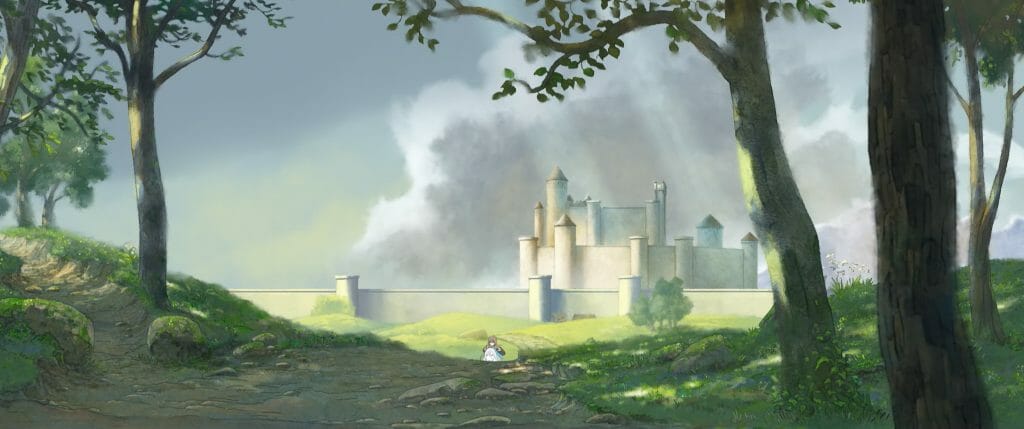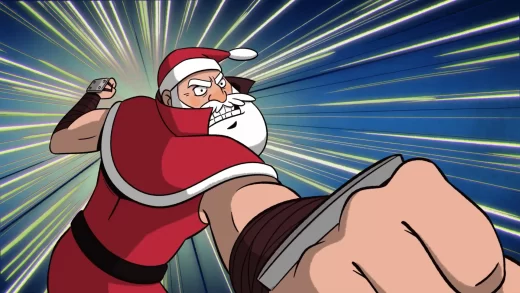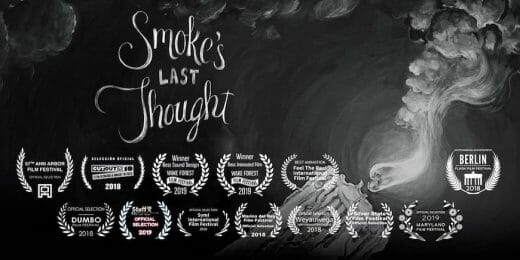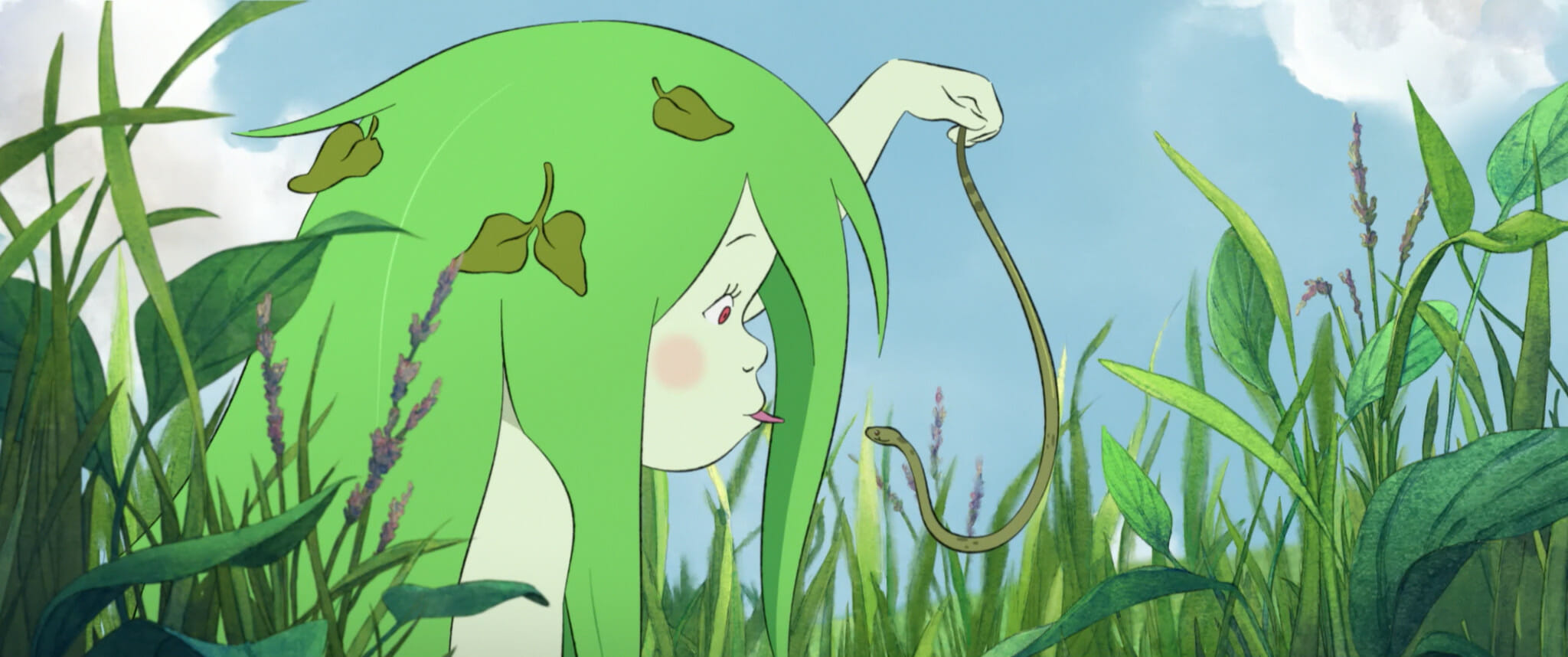
Princess Dragon is an animated feature film produced by Ankama (known for the animated series, Wakfu). Ankama was founded by Anthony Roux and Camille Chafer, and is based out of Roubaix, France. Their latest project was one of the nine feature films in production selected for this year’s WIP sessions at the Annecy International Animation Film Festival.
The film presents a distinctive universe and illustrative style, with lush watercolor textures. To understand the creative process behind Princess Dragon, Veronique Dumon spoke with Patricia Robert (producer), Julien Bachelet (lead compositor) and Jean-Jacques Denis (co-director).
The following interview was translated from French. You can find the original text published by our colleagues at Canopea Formation, which helps studios in France, Belgium, Luxembourg, Sweden, and the Netherlands integrate Harmony and Storyboard Pro into their production pipelines.
For this third Ankama film, what were your sources of inspiration and the themes you wanted to address?
Jean-Jacques Denis: For the drawing, we went back to classical visuals, engravings, and illustrations of old tales: Gustave Doré, Arthur Rackham… Mostly to refresh our ideas and because it was stimulating, in order to come back to something a little more natural. In the end, the result is quite distant from the references, but these inspirations have fed the film in some way.
We wanted to address the question of the value of things, ties and values… The place of the child in a family. And through the heroines, the birth and strength of friendship, as well as relationships with parents and their expectations.
Why was it important for your feature film to be 2D?
Patricia Robert: 3D is not really the culture of Ankama. And the directors, Anthony Roux and Jean-Jacques Denis, wanted to make a classic tale. They wanted, in terms of the design of the sets and characters, a slightly watercolor, pastel treatment, and a particular line with a very natural look. No one imagined making the film in anything other than 2D.
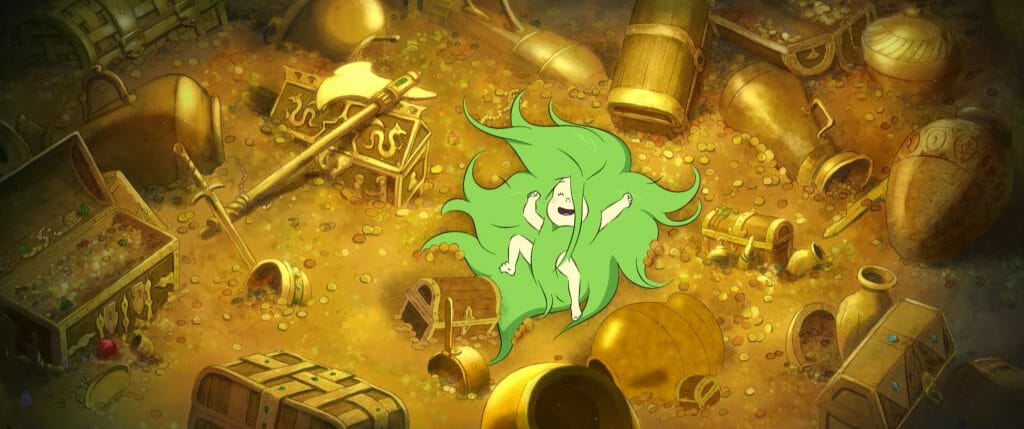
With this in mind, why did you choose Harmony?
JD: The question of making the film other than in 2D animation did not arise, even if we occasionally use 3D in a brief or specific way. The question was more about the style and type of rendering desired. Here again, we quickly moved towards a pencil and watercolor style for the sets. Harmony was chosen for the traditional animation because it offers us a large flexibility for the line, whether it is vectorized or not. It is therefore very effective for the animation and coloring of the characters.
Julien Bachelet: We had our first experience with Harmony two years ago on the first season of the youth fantasy series Abraca (26×22 for France Televisions). It really helped us to understand the software, its strengths, and what it could do for us on a project like Princess Dragon.
Abraca is at the opposite end of the spectrum, but it was an ambitious project, with a large volume of episodes, and we needed a tool that would allow us to produce the series from A to Z. In terms of the production process, the characters were 2D rigs, which required technical set up before even considering animation.
This was not the choice your studio made for Princess Dragon?
JB: Absolutely. On this film, we made the choice of using traditional animation techniques. The strength of the software is that it makes both types of projects possible. We can work with puppets as well as with traditional methods, with the advantage of being able to free ourselves from all the constraints that existed at the time when we used paper and pencil.
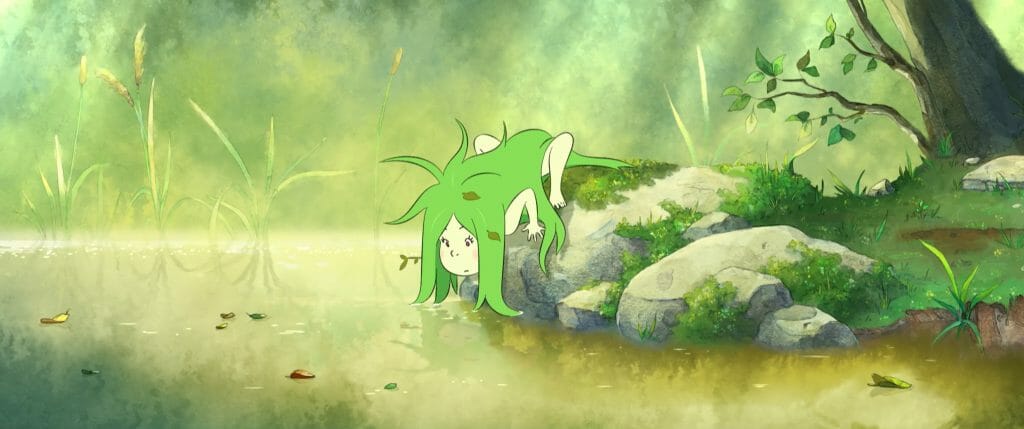
Can you tell us about the pencil style line that you were looking for in the film?
JB: Yes. With other vector software on the market, that we use on other projects, we get a very smooth, perfect line. Trying to reproduce a line closer to what could be created by charcoal, for example, would be possible, but it would require a lot of resources. The files become very heavy to work with, with a risk of corrupted data. It is very risky; we were on the razor’s edge.
On our productions where the vector side is important, another tool is needed to keep this vector quality until the compositing.
But again, the directors of Princess Dragon had this desire for an almost natural line. Harmony today offers tools that are exceptional for that, allowing you to draw a line in real time on a tablet or other device without any latency, in a fluid way, exactly like on paper. While retaining the advantages of vector lines.
Was finding the “right” line an important part of the preparation?
JB: We did a lot of testing to find out what style of line we were going to adopt. There was a lot of back and forth, different techniques tried. We had to define if these techniques were compatible with our budget, the time we had available, even with the teams we had not yet put together at that time… And then, when you put all these elements in the context of the pandemic, it was not necessarily so easy to find artists capable of adapting to the demands of this project.

Because you started making the film just before the pandemic?
PR: We started the film in September 2019, so we went through both lockdowns. The film was made on three main sites: in Roubaix at MadLab, the studio created by Ankama and Media-Participations, at Akami in Paris, Ankama’s Parisian studio, and in Montreal, at Caribara. The Ankama No Border studio in Tokyo participated in the modelling of the Dragon.
On all the different sites, work was organized both remotely and within the studios throughout the production process, respecting the instructions of each country.
How many people worked on the animation?
PR: We had a team of about twenty animators in Paris for rough animation, and some assistants. A team of a dozen assistants who worked on the cleanup and the inbetweens at MadLab, and a team of 5 people for the colorization. 20 minutes of the film were also animated in Montreal, at Caribara, by a team of about 15 people. Plus, Julien’s team for compositing.
JB: There were 10 of us.
PR: It’s not a big team, but by organizing the production over two years, we didn’t need more.
